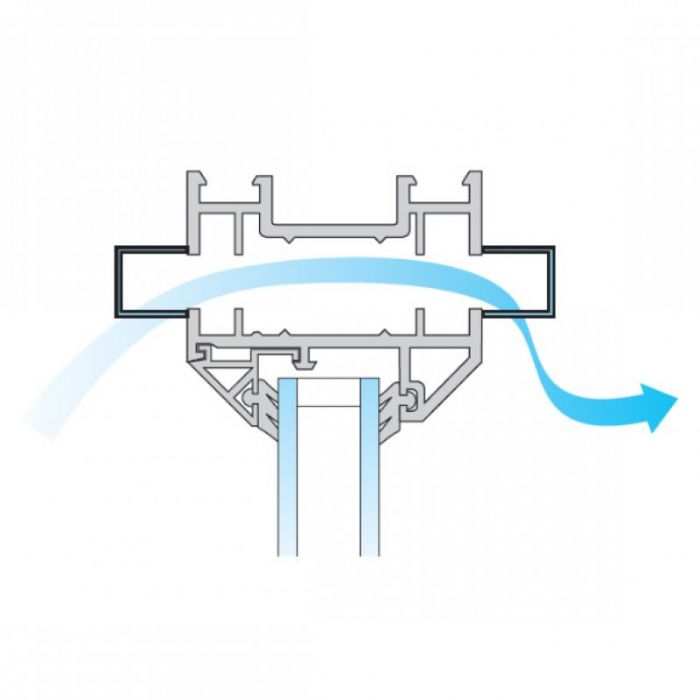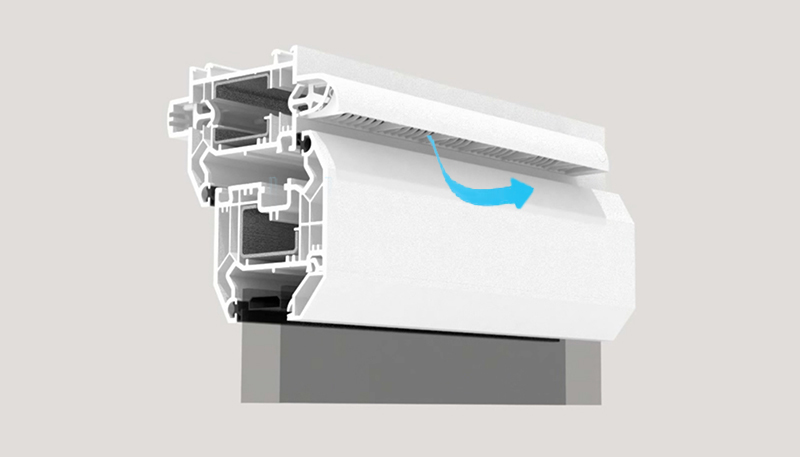Get A Quote
One of our team would be happy to have a chat with you about your requirements, answer any unanswered questions and measure up at a time that suits you to provide you a free, no obligation quote.
This guide will tell you why you need trickle vents in window frames and what they actually do!
Also we will cover the new buildings regulations law as per the Government Act of June 2022 and where in the house they are a requirement by law.
Window trickle vents are small, unobtrusive openings fitted into window frames that allow a limited amount of air and ventilation to flow into the home.
Especially now in new residential properties, where they are built to be airtight, it is a priority and trickle vents now play a crucial role. The vents continuously allow a trickle of fresh air to flow in, hence the name.
The main purpose of installing trickle vents is to provide background ventilation that helps remove excess moisture and pollutants from indoor air, that could lead to the growth of harmful mould.
They typically have covers to keep out drafts and insects which you can open and close.
Moreover, the new building regulations from June 2022, mandate the inclusion of background ventilators in replacement and newly installed windows, showing the significance in maintaining proper air circulation within residential spaces.

Trickle vents use the natural movement of air to bring in fresh outdoor air. As warm, stale air rises and escapes through extraction vents, it creates a slight vacuum. This pulls in replacement air from outside through any available trickle vents.
Even a tiny opening makes a surprising difference. Although the airflow is restricted, opening just a few vents per room provides enough fresh air for a whole building. The vents generally stay open at all times, with covers to limit drafts. This maintains continuous ventilation.
The small inlet size serves an important function. Large openings would allow air to rush in too quickly, creating uncomfortable drafts. Restricting the size controls air speed while still permitting ample air flow. The vents are carefully engineered to optimise venting performance.
The Government changes to Approved Document F come into effect from the 15th of June 2022 in England and the 23rd of November 2022 in Wales. Any window and door installation taking place from that date onwards must comply with the new building regulations.
As a FENSA Approved Installer it is our responsibility to ensure your replacement windows and doors comply with the Approved Document F.
The change is due mainly as homes are built more ‘air tight’ than previously.
The primary benefit is improved indoor air quality. Trickle vents dilute pollutants like VOCs, radon, and excess humidity. This creates a fresher, healthier living environment. Stale, polluted air is constantly replaced with new air.
When replacing windows which already have trickle vents a vent of the same size or greater is required.
With new windows being more airtight than older in the vast majority of cases, trickle vents would be a requirement within the new replacement frame.
The government have produced the following guide on ventilation in homes and what the new building regulations require – Gov.uk – Existing Home Ventilation Guide

We only use and fit the best products on our windows. The Link Vent system that we fit, is a NFA 2022 Winner and NFA 2023 Finalist.
It is designed for use on all window types (UPVC, Aluminium and Timber), with excellent UV colour stability and with 1000’s of colour decoration options, delivered in any combination. Including popular Anthracite Grey or even Chartwell Green.
By using award winning trickle vents, we know that sound insulation and air flow are of equal importance and are up to the highest standard available.
Improved Air Quality
The primary benefit is improved indoor air quality. Trickle vents dilute pollutants like VOCs, radon, and excess humidity. This creates a fresher, healthier living environment. Stale, polluted air is constantly replaced with new air.
By regulating indoor humidity, trickle vents help prevent condensation from forming on windows, walls, and other surfaces. This condensation can lead to mould growth and damage like peeling paint or plaster. Trickle vents are an important tool for controlling condensation.
Unlike noisy, draughty windows, trickle vents provide subtle, draft-free ventilation. They generally go unnoticed while working away in the background. Homeowners don’t have to remember to open windows or manually turn on fans.
A trickle vent offers subtle background ventilation, while the window frame itself provides supplemental venting. For example, a bathroom window may have an integrated vent for continuous humidity control. Opening the window widely provides a temporary boost in air exchange as needed.
Now with a trickle vent, you have the ability to ventilate a room without the need of opening windows.
Though some windows have a night latch, which leaves a small gap open securely, it is important to note that this is not an acceptable ventilation option with the new building regulations – you will still need a trickle vent built into the window frame.

Trickle vents should be incorporated into any whole-house ventilation strategy. They are recommended for nearly all buildings, including homes, schools, offices, and municipal buildings. Specific applications include:
For optimal performance, vents should generally be left open at all times to create constant airflow. Covers prevent drafts but sometimes vents may need to be closed during extremely cold or windy weather. Otherwise, the subtle air exchange should run continuously.
Vents should be positioned where replacement air is needed most, like moisture-prone areas. They can be placed high on walls or discretely fitted into window frames. Proper placement is critical to prevent backdrafting or drawing in contaminants. Professional installation is recommended.
Trickle vents play an integral role in a building’s overall ventilation strategy. While mechanical systems and extractor fans expel air, trickle vents provide the crucial inlet capacity.
For windows, a trickle vent offers subtle background ventilation, while the window frame itself provides supplemental venting. For example, a bathroom window may have an integrated vent for continuous humidity control. Opening the window widely provides a temporary boost in air exchange as needed.
They also help make opening windows more effective. Without inbound replacement air from vents, open windows tend to push indoor air out without pulling much outdoor air in. The combination creates an effective push-pull system.
Yes, vents can be installed in existing window frames, however for best results we wouldn’t recommend it.
One would have to precisely drill through an existing frame perfectly to fit the vents so excess air wouldn’t flow in.
Having the vent pre built into the frame really is the best and in the end most cost effective solution.

The new building regulations are different depending upon the type and age of your property.
As you can see, the vast majority of replacement windows do require trickle vents installed or you can prove your property has other means to produce high enough levels of background ventilation or have an exemption.
As noted above homes with MVHR systems do not need to install trickle vents under the current building regulations act.
Also historic and listed buildings are exempt from trickle vent installations when:
They are in a conservation area which is designed in accordance with section 69 of the Planning Act of 1990 (Listed Buildings and Conservation Areas).
They are listed and in accordance with section 1 of the Planning Act 1990 (Listed Buildings and Conservation Areas).
Historic buildings made with a vapour-permeable construction that both absorbs moisture and readily allows moisture to evaporate. Instances of these include those built with wattle and daub, cob or stone and constructions using lime render or mortar.
There are other exceptions, which can be for houses that are adjacent to very busy roads and susceptible to pollution. Here, the positioning of trickle vents should be placed on the less polluted size of the building and use the highest vent size possible.
It would be preferable in cases such as these to use a mechanical ventilation system.

The vast majority of the time, homeowners dislike of trickle vents are largely based on looks. That their old frames had a cleaner profile and that they perhaps looked better.
Also that they could be difficult to clean or that some outside noise may come in and also cause more of a draught, when the vents are open in cold climates.
New trickle vent designs today are made to seamlessly merge with the window frame as much as possible. They are much better than they were even 10 years ago, with 1000’s of colour schemes to match.
They have an easy to cleanable design, and are made with filters that block dust, pollen, and bugs without restricting airflow.
In the vast majority of new window installations, trickle vents are required to be fitted to pass the Building Act of June 2022 and we as a FENSA registered company would not be able to supply windows without vents where they are required by law to do so.
If one were to fit windows without trickle vents when required, firstly, this would be against the current Building Regulations and secondly there would be a real issue in selling the property as it would not have full Buildings Regulations.
We at Sheerwater Glass can advise you on what you need to be fully compliant and ensure all Building Regulations are being followed.
We will provide you with a certificate that shows the work has been carried out by a registered FENSA installer and that the windows meet the current Buildings Regulations.
All information presented here is to act as a guide only and correct at the time of publication: March 2024
For further information please read in full the Building Regulations Approved Document Part F.
It is good practice to seek approval from your local planning authority before any building work is carried out, as Building Regulations are subject to change.
One of our team would be happy to have a chat with you about your requirements, answer any unanswered questions and measure up at a time that suits you to provide you a free, no obligation quote.
Sheerwater Glass provides window installation and repairs throughout Surrey and the surrounding areas of our Woking showroom. If you’re interested in our services, we encourage you to check if we serve customers in your area by simply typing in your postcode.
If you check and find that we don’t serve customers in your area, in some cases, we may be able to help. Please call us to find out more.